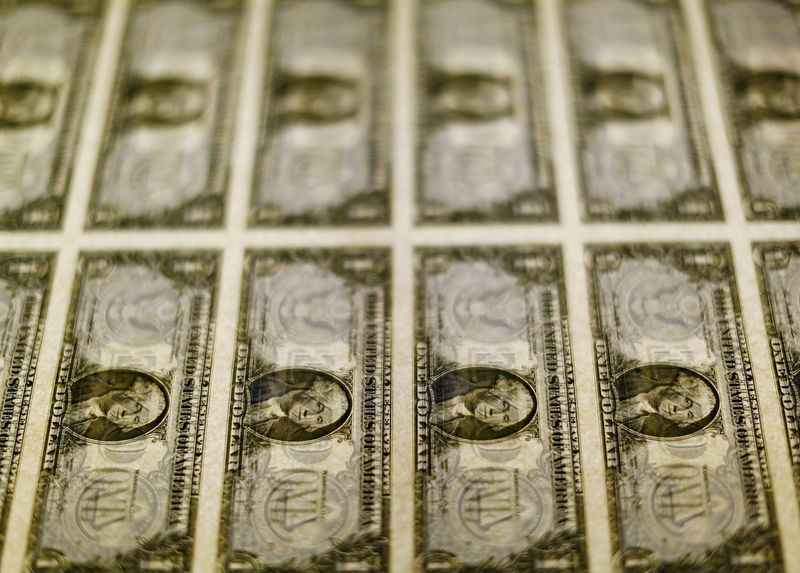(Bloomberg) -- Traders looking to short the dollar have history and monetary policy on their side as seasonal trends and a dovish Federal Reserve align, further sapping demand for a currency that’s fallen almost every day this month.
The Bloomberg Dollar Spot Index has dropped in June in eight of the last 10 years by an average of roughly 0.7%. This month it is already down 2.3% ahead of the Fed’s decision Wednesday, when policy makers are expected to reiterate a commitment to buoy the economy. The index’s decline pushed it below the psychological milestone of 1200, a level unseen since early March.
This month has generally seen haven demand slip and currency traders -- who were caught off guard by the frenzy to snap up riskier assets as economies reopened and central bank stimulus fueled a rally in equities -- may remain hesitant to re-establish long dollar positions.
The greenback “has no big advantage in a risk-on world,” said Steven Englander, head of Group-of-10 FX research at Standard Chartered (OTC:SCBFF). Investors are seeing “diminished” dollar attractiveness as “there looks to be some economic light at the end of the Covid tunnel.”
The dollar’s traditional weakness in June typically follows gains historically seen in May off the back of weaker U.S. equity performance. That’s why traders were caught off guard last month when the greenback dropped 1.2%, its worst month this year, and stocks rallied. The Covid pandemic and policy response has turned tables on the traditional sell-in-May adage and relation between stocks and the U.S currency.
Lee Ferridge, State Street’s head of macro strategy, is bearish on the dollar and said his favorite G-10 currency is the euro as that region’s leaders boost stimulus. In addition, a recent decline in central bank policy rates around the world makes Europe’s negative rate policy less of a drag on the shared currency.
Still, there are some factors that could work in favor of the greenback.
U.S. Treasury yields have come off their lows, with the 10-year trading near its highest level since March and potentially luring those who favor the yield differentials with peers. And for some currency traders, the prospect of the Fed holding off on introducing any market-altering policies could boost yields and decrease the probability of negative rates, making the dollar attractive.
“With the economy seemingly on the mend, the case for negative rates has gotten even weaker,” Win Thin, a strategist at Brown Brothers Harriman, said Monday. Negative interest rates are “very unlikely.”
Looking past the Fed meeting, the dollar may also find support should the risk of a second wave of coronavirus infections emerge.
There’s “the very real potential for a second wave of infections to occur in the fall, which could mean a renewed move to ‘safe haven’ asset classes,” said Kristina Hooper, chief global market strategist at Invesco (NYSE:IVZ).
Still, the dollar’s temporary rebound Tuesday -- it climbed at one point by as much as 0.5% before dropping to end the day steady -- wasn’t enough to convince many of a turnaround in sentiment, and it resumed its decline Wednesday.
“Dollar weakness has more to go,” George Saravelos, global head of FX research at Deutsche Bank AG (NYSE:DB), wrote in a note. “We don’t think the move is over.”
©2020 Bloomberg L.P.
